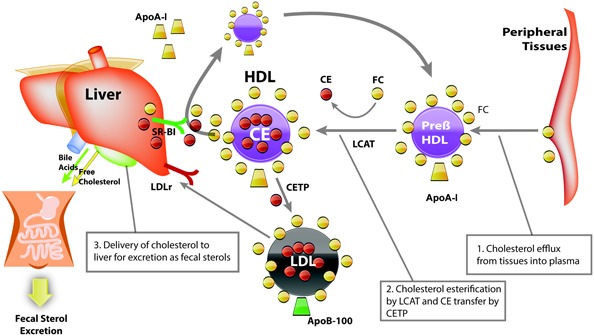Figure 1.

Diagram of reverse cholesterol transport. Reverse cholesterol transport starts with the transfer of free cholesterol (FC) and phospholipid to a lipid‐poor pre–β high‐density lipoprotein (pre–β‐HDL) particle. Esterification of free cholesterol to cholesterol ester (CE) by lecithin:cholesterol acyltransferase (LCAT) then generates a mature HDL particle. From this mature HDL particle, cholesterol ester may be transferred to low‐density lipoprotein (LDL) via cholesterol ester transfer protein (CETP) and then delivered to the liver via the LDL receptor (LDLr). Alternatively, selective cholesterol ester uptake via scavenger receptor class B type I (SR‐BI) can deliver cholesterol ester directly to the liver from HDL, regenerating a lipid‐poor apolipoprotein (Apo) A‐I–containing particle. Once delivered to the liver, cholesterol can leave the body via biliary secretion.
